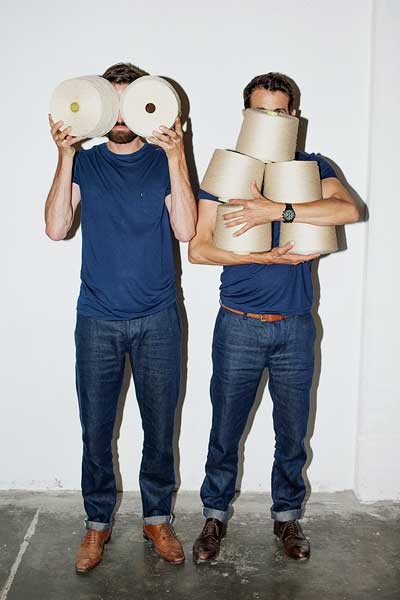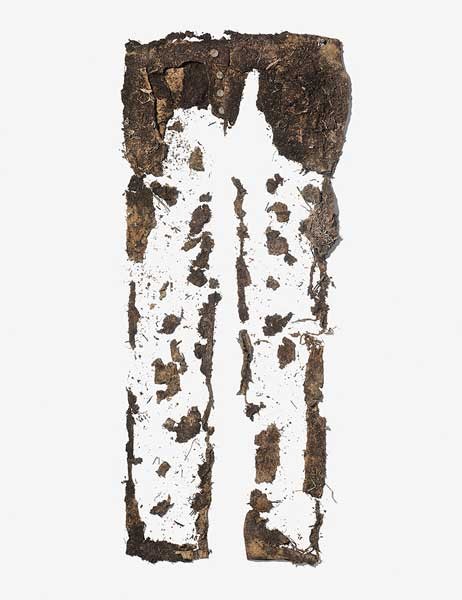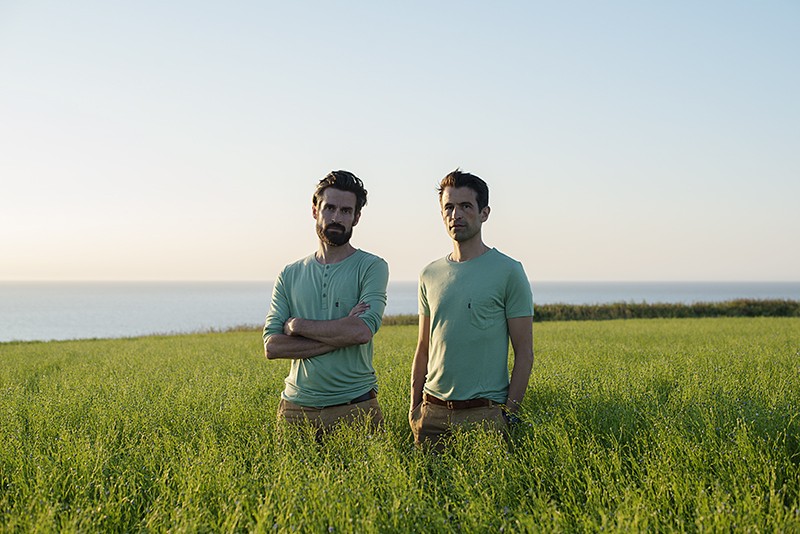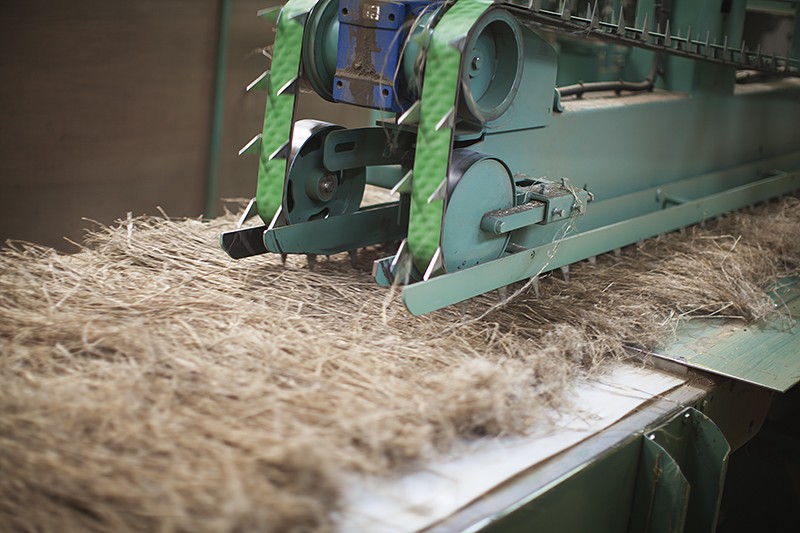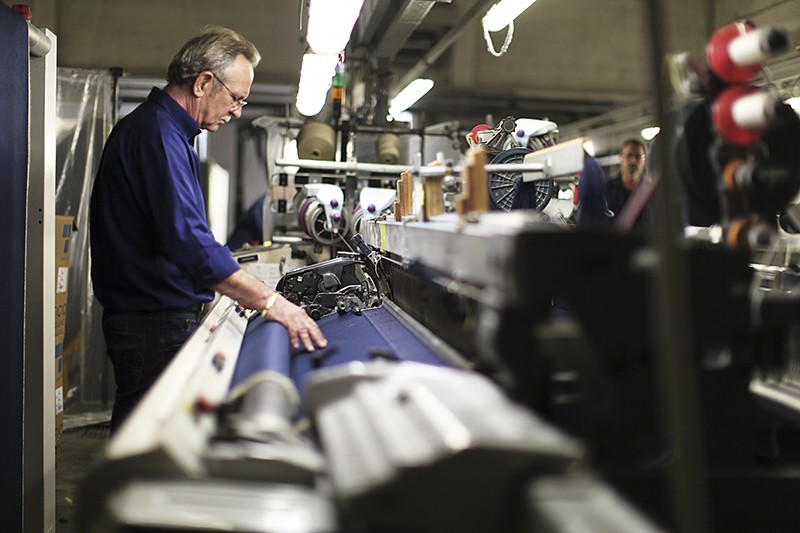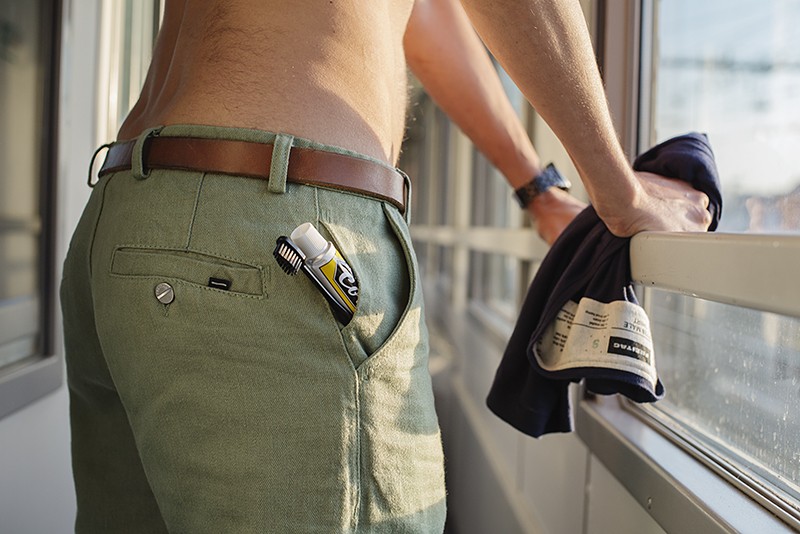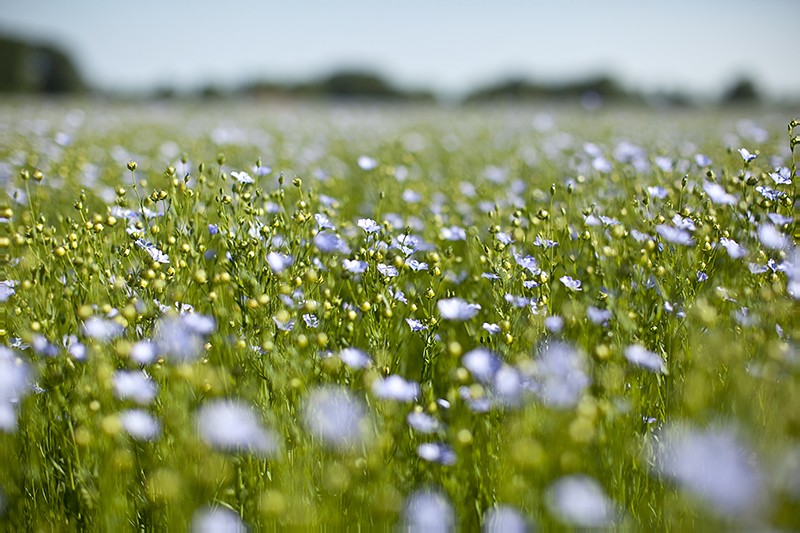Internationally known for their truck tarpaulins cycling and messenger bags, the Swiss FREITAG brothers are launching a 100% compostable apparel line made from their self-developed biodegradable textile F-abric. NoéMie Schwaller sat down with Markus Freitag to find out more about the clothing that doesn’t want to be called fashion.
Today you launched a new line for FREITAG consisting of four items of clothing. You explicitly don’t call it fashion –why is that?
We don’t call it ‘FREITAG Fashion’ as we call it ‘Fabric’; a material as a base out of which to develop long-lasting fashion products. FREITAG is known for working with special materials. Whit the stubborn truck tarp we’ve been designing products fitting for exactly this. During the last 20 years we made of lot of nice drawings of bags, but as soon as it came to prototyping, it looked a little ugly because tarp is strange. Material limitations can be inspiring, and we want it to be the same way when it comes to fashion or fabrics. We should focus first on the material and then decide what we can make out of it. Now we’re starting with the product design for this certainly really small collection. We’ve already got a few more products still in prototyping, but today we already talked to the first possible retailers. We want to keep our collection small – also in future. Fashion works in seasons, which we don’t like as seasons are too short and always heading in completely new directions. We want to stick with the same theme for more than one season, maybe for years even– like we did with the truck tarps.
The ethics you represent, live and give to people is lacking in fashion. Shouldn’t exactly this be pushed in the industry?
I agree. You try to be different, wanting to have something not all other fashion brands have, but if you look at it from the environmental side, the whole industry should take on our direction – it would be much better for the next generation. In this respect, we certainly hope to inspire the industry. We’re not the first ones to be working with these fibres – hopefully not the last ones either. We have to come up with more distinctive products, and that’s what should set us apart from our competitors; not the ethical, environmentally friendly vision we pursue.
In your press presentation in August you mentioned you had looked for a fabric compatible with an idea in your head, but which you couldn’t find. As it’s made out of hemp and linen this came as a surprise to me. I mean, there must be something like this on the market, no?
Fabric, yes, but finished products the way we liked them weren’t available. Seven or eight years ago we went to the big fabric fair in Paris and to all denim suppliers. They make beautiful denim out of cotton, but only one supplier featured hemp in his collection. The fabric we were looking for wasn’t available, and during the development we found the reason for it. 100% linen fabrics do exist, but this special linen for summer dresses was not what we were after. Then there are hemp fibres, but their surfaces didn’t convince us, as they are too rough. In the end we started creating our own fabric and realised that achieving the perfect blend isn’t easy. After having made lots of samples with different percentages we now go with 81% linen and 19% hemp. To come up with a dense fabric you need some pressure on the thread, which makes it break all the time – that’s why cotton weaving mills don’t work with hemp linen. Linen is stronger than hemp when it comes to the pressure; you’ve got to figure out which fabric is right for which function. If you go to big manufacturers and ask for something that’s not available and sounds a little complicated, they won’t even start their machines as it takes them days to set them up. The company we work with had just done a big batch and the thread was breaking all the time, but after a few hours the machines started working well. Those people need to have a lot of passion – they see that there’s a niche, even if it’s not a very big one just yet. I read this story about 10’000 Indian cotton farmers who killed themselves because they couldn’t afford the pesticides they needed to grow genetically engineered cotton. Cotton just needs too much water to grow. Now we might have an answer; admittedly a small one because so far flax fibres only make up about 1% of all fabric production. Coming back to your previous question, yes, I do believe the industry has to go in this direction.
It’s nice to see you researched very deeply into this matter. Coming back to the style of your clothing, you say it’s not seasonal fashion, but it’s certainly contemporary. It started out as an idea of a uniform for your team that does rough, dirty work. Now you’re launching it to be sold. Will your team members actually be wearing your designs at work?
They won’t fit all people. Womenswear usually has elastane, but we don’t want to start mixing with synthetics, so definitely have to work on more shapes and cuts. The clothes are on offer, but the workers are not obliged to wear them. Especially on the office floor they don’t want to wear a uniform on a daily basis. If it fits, that’s great, if not, we have a plan B. So far we also have Carhartt as an alternative.
Tea or coffee?
Tea, actually, but also a lot of coffee. Not that much, just the two coffees a day, but in a way I feel more like a tea person.
We heard that on the work floor there’s water and apples but to get croissants and coffee – the unhealthy choice – one has to walk up the stairs. Is fitness the thought behind that?
Yeah. It’s to keep the work forces healthy. We also offer coke against a fee, while water is free. It should make them think about the difference between working for a company like FREITAG and Coca Cola.
Clearly FREITAG is a company everybody would like to work for. You have team dinners and a great atmosphere. When walking through your production sites everybody says ‘Hi’. Having started as such a small DIY company, how is it possible to build something that is so thought-through in every detail?
We didn’t have a big plan; it was rather a lot of small steps. We took our time and there’s still a lot to do. I walk through the company thinking, “It’s not bad.” But that also motivates you. I like going back to work every day as I see that there’s still a lot to do, but it makes me happy to see that it’s definitely going in the right direction. I hope in future our customers will understand our philosophy behind it, even if they have to spend a little more than for similar products made in Bangladesh.
Having developed your first range of clothing items while having additional items in production, are you still working on the bags?
We’ll do it side by side and are thinking of bringing those two fabrics closer together. The main focus is still on the bags, but we’re hoping to be commercially successful also with the fabric. First we have to get started; it’s too early to make predictions. We also still have a lot to do on the bag collection – it’s now too big for customers to get a quick overview. Over the years we’ve been adding more and more products and as long as they sell, nobody wants to kick anything out, but sometimes you simply have to kill a darling in order to start with new, more sophisticated products.
I guess hemp bags are going to be the next thing then. When are you going to launch the FREITAG bicycle?
We gave it a try and have been participating in a project, but unfortunately that company went bankrupt. It was a small bicycle manufacturer. I like to think about our own bicycles. It has to be something in-between all the seven bicycles I have – they’re all good for different functions but sometimes I wish I could merge them. It seems to me we’re going to have to develop it ourselves but I can’t say when. It’s not a project we’re investing time in at the moment, but mentally we do. I don’t have a driving licence, so I think about bikes.
Which actually brings us back to the beginning of your story of not finding the product that you want and just launching it yourself. Thank you very much for your time.
Thank you!
Interview: NoéMie Schwaller
